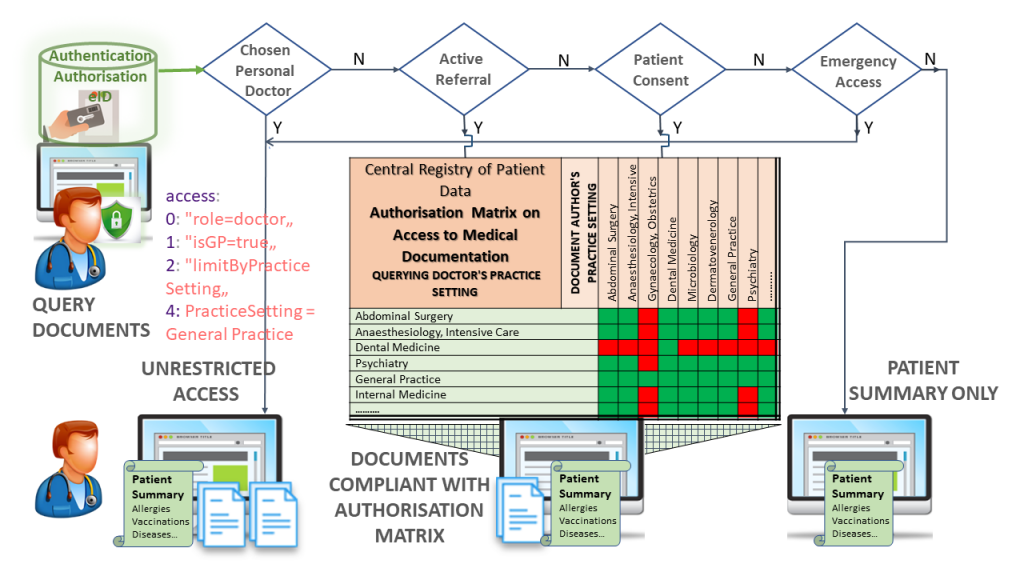General information
Central Registry of Patient Data (CRPD) is a core platform for Slovenian eHealth, enabling the sharing of electronic health records (EHR) on a national level. It comprises a variety of healthcare documents and is available to all healthcare providers and professionals. Healthcare providers are assigned to submit records, and are authorised to access the records in order to provide healthcare treatment. Today, most healthcare providers participate in data exchange though CRPD, millions of records are submitted monthly and over 95% of Slovenian patients have at least one record. CRPD is by far the most complex and inclusive public information system in Slovenian healthcare, providing essential information to patients, healthcare professionals and health authorities.
Figure 1: Slovenian eHealth Architecture
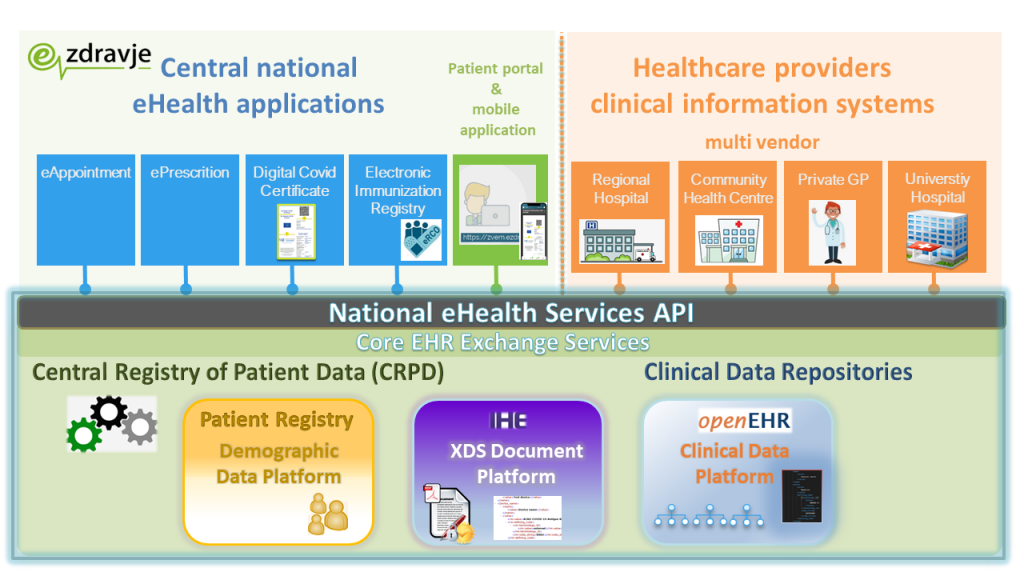
CRPD platform consists of three building blocks:
IHE XDS document platform provides basic functions for storage and exchange of a variety of healthcare documents. It is accessible to all public and private healthcare providers via an application programming interface (API). Healthcare providers are free to choose any clinical information system as long as it is compatible with the API.
Open EHR data platform stores structured medical data. Upon submission of a structured xml document, the pertaining data record is stored in the OpenEHR database, contributing to the national eHealth data repository.
Patient registry (demographic data platform) contains up-to-date demographic and status information on all citizens and residents of Slovenia. This includes permanent and temporary address, information on next-of-kin relatives, legal guardians and chosen personal doctors.
These building blocks are the pillars of a powerful CRPD application, providing a comprehensive set of EHR management services.
Figure 2: Storage of Electronic Health Records in CRPD
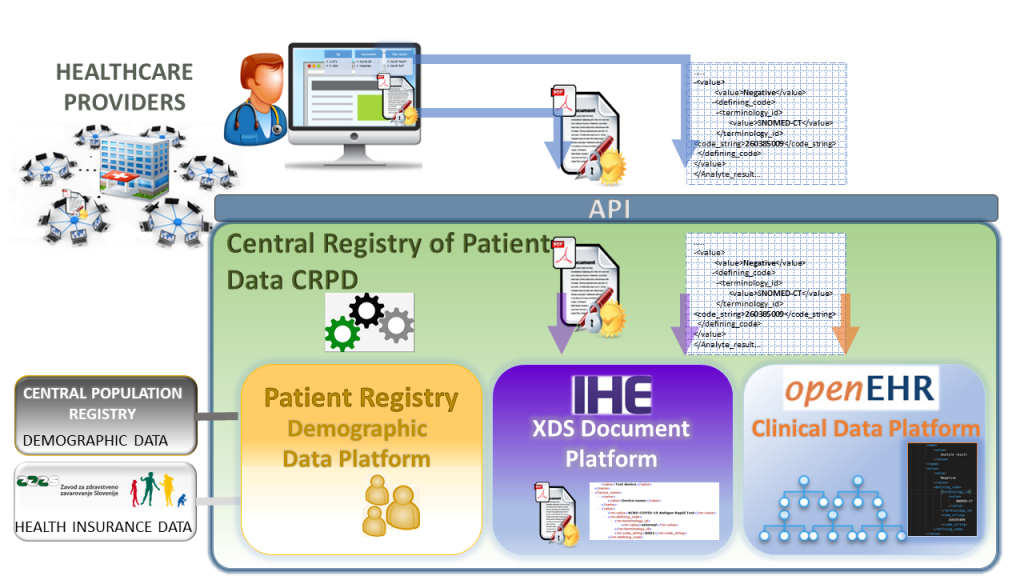
Slovenian Patient Summary – available anytime, anywhere
A patient summary is a set of essential health information that includes the most important clinical data required to ensure optimal medical treatment. Every healthcare provider is legally obliged to provide patient summary records where applicable, and every healthcare professional is authorised to access patient summary documents when providing healthcare services. Upon searching in CRPD, a patient summary document is generated in the form of an on-demand document, presenting up-to-date information for authorised healthcare professionals at any point in time and location in Slovenia.
Figure 3: Patient summary recording and retrieval
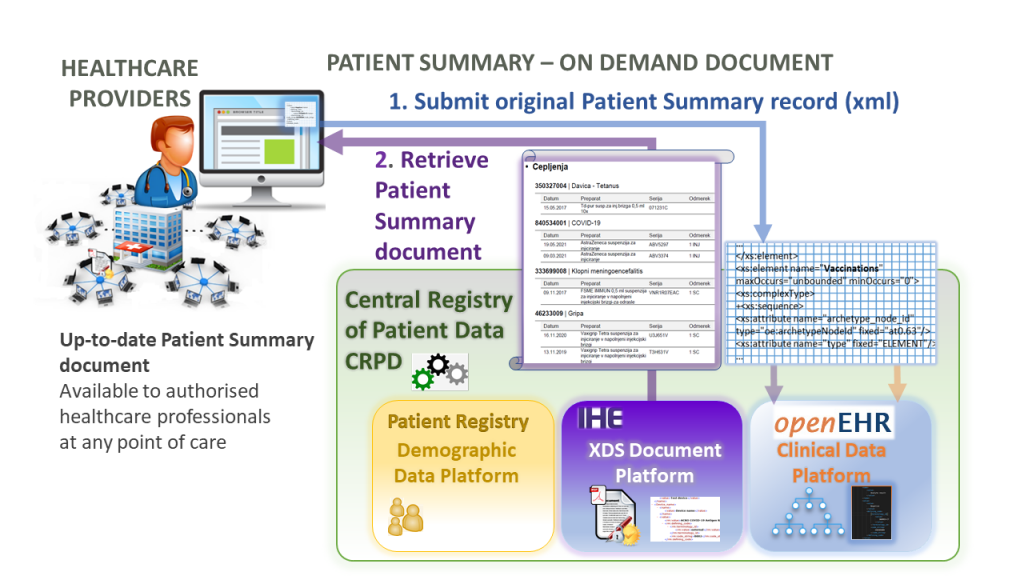
Getting the most of the EHR: one record, multitude of applications
The unique architecture of Slovenian eHealth enables it to harness the full potential of digital records.
By entering a single vaccination record in the physician’s office, the vaccination data is added to the patient summary and instantly available to all healthcare professionals. At the same time, the vaccination record is transferred to the Electronic Immunization Registry. Data on vaccinations is combined with enhanced demographic data and processed for epidemiological surveillance. General practitioners can monitor vaccination status for their patients. Vaccination rates can be analysed by various attributes, such as age and geographical location. Vaccination adverse reactions are linked to the respective vaccination encounters, automatically transferred to the CRPD and added to the patient summary.
Figure 4: CRPD and Immunization Registry
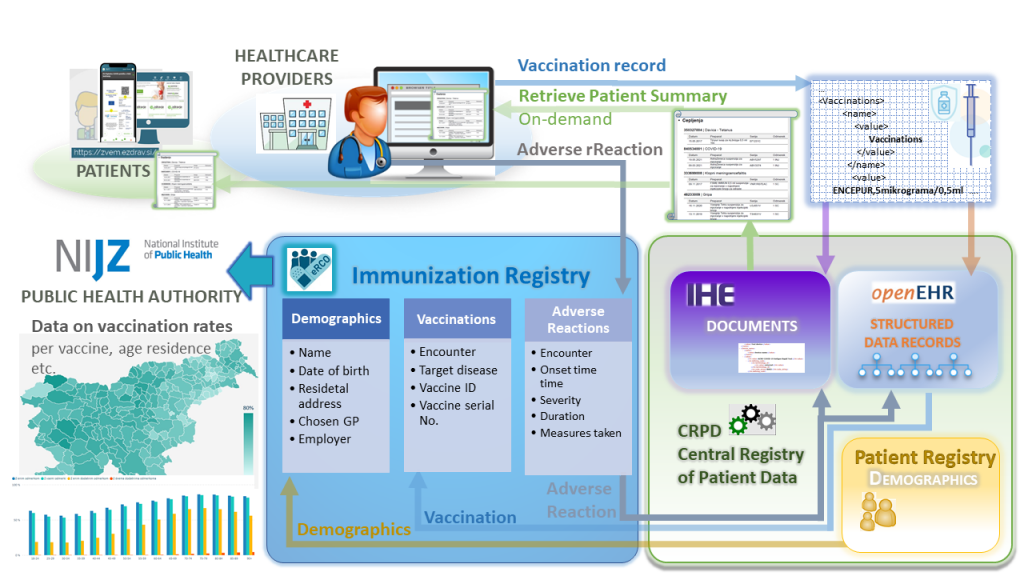
EU Digital Covid Certificate (DCC) in Slovenia
CRPD is a source of up-to-date and reliable data for the DCC issuing application. A DCC is available immediately upon submission of the respective test record or vaccination record. Generation of a DCC is automatically triggered upon CRPD query and the DCC is simply added to the patient’s other healthcare documents. All healthcare providers in Slovenia have immediate access to the DCC for every patient without the need to upgrade local clinical information systems. The DCC can be simply retrieved either by the patient via the zVEM patient portal or mobile application, or by healthcare professionals at a point of care via the local clinical information system.
Figure 5: CRPD and Digital Covid Certificate
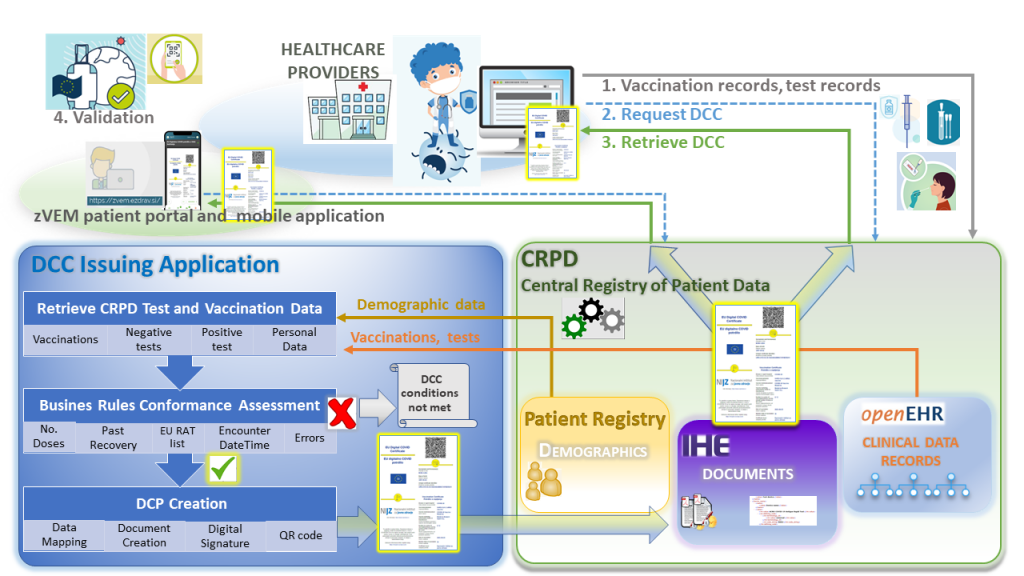
Legislative framework, personal data protection and CRPD
According to the Healthcare Databases Act, no patient consent is needed for data processing and healthcare providers are mandatory users. The legal definition of CRPD content comprises a variety of healthcare documentation and patient summary records. Healthcare providers are legally authorised to access CRPD where applicable in the course of the care treatment. Access rules are stipulated in the Rules on authorizations for data processing in the Central Registry of Patient Data. Healthcare documentation is accessible to medical doctors, based on the patient’s choice of personal doctor, an active referral or appointment, patient consent or emergency access. Further restrictions apply with regard to medical practice setting. As opposed to healthcare documentation, the patient summary is widely accessible to all healthcare professionals unless the patient has explicitly prohibited access.
Queries to CRPD are only possible upon registration with a personal digital certificate. Every single query is evaluated with regard to professional qualification and the medical practice setting to which the physician is entitled by their employer. Accordingly, the physician can only retrieve the documents in accordance with their personal credentials.
Figure 6: Rules on access for healthcare professionals
